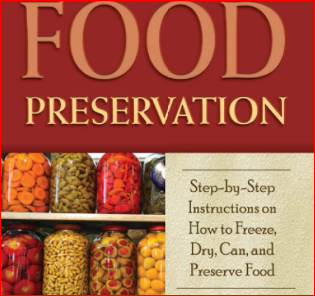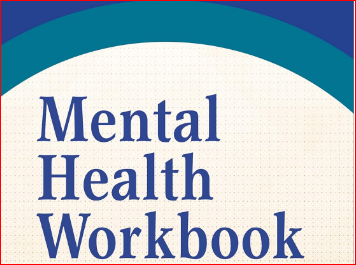The Essential Guide to Off-Grid Living: Mastering Self-Sufficiency in the Wild
Off-grid living is more than just a lifestyle choice; it’s a commitment to self-reliance, sustainability, and a deep connection with nature. Whether you’re planning to live off the grid permanently or simply want to be prepared for emergencies, mastering critical skills is essential. This guide covers everything from emergency first aid and herbal remedies to pioneering skills like crafting buckskin clothing and understanding weather patterns. Let’s dive into the critical aspects of off-grid living.
1. Health and Safety: Emergency First Aid and Herbal Remedies
Emergency First Aid
When living off-grid, access to medical facilities may be limited, making first aid knowledge crucial. Here are some essential skills:
CPR and Basic Life Support: Learn how to perform CPR and use an AED (Automated External Defibrillator). These skills can save lives in cardiac emergencies.
- (Ad.)
Survival First Aid Kit with Survival Gear, First Aid Supplies, Emergency Tent, and Nylon Bag, Ideal for Car, Travel, Home, Outdoor Adventures
Wound Care: Clean wounds thoroughly with clean water and soap. Use sterile bandages or cloth to prevent infection. For deep wounds, apply pressure to stop bleeding and seek professional help if possible.
Fracture Management: Immobilize broken bones using splints or improvised materials like sticks and cloth. Keep the injured area elevated to reduce swelling.
Shock Treatment: Keep the person warm, elevate their legs, and ensure they stay hydrated. Shock can be life-threatening, so monitor their condition closely.
Herbal Wound Treatments
Nature provides a wealth of remedies for common ailments. Here are some herbal treatments for wounds:
Plantain: This common weed has anti-inflammatory and antimicrobial properties. Crush the leaves and apply them to cuts, scrapes, or insect bites.
Yarrow: Known as “nature’s bandage,” yarrow stops bleeding and promotes healing. Apply crushed leaves to wounds.
Comfrey: Comfrey speeds up tissue repair. Use it as a poultice for bruises, sprains, or minor cuts (avoid using it on deep wounds).
Honey: A natural antiseptic, honey can be applied to burns or wounds to prevent infection and promote healing.
2. Shelter and Survival: Building and Maintaining a Safe Home
Choosing a Location
Selecting the right location is critical for off-grid living. Consider the following factors:
Water Source: Ensure access to clean water, such as a river, stream, or well.
Sun Exposure: Choose a spot with ample sunlight for solar power and gardening.
Protection from Elements: Look for natural windbreaks like hills or trees to shield your shelter.
Building a Shelter
Debris Hut: A simple, effective shelter made from branches, leaves, and natural materials. It provides insulation and protection from rain.
Log Cabin: For a more permanent structure, learn to build a log cabin using locally sourced timber.
Earthbag Construction: Use sandbags filled with soil to create durable, eco-friendly walls.
Maintaining Your Shelter
Roof Repairs: Regularly inspect and repair your roof to prevent leaks.
Insulation: Use natural materials like straw, wool, or clay to insulate your home and maintain a comfortable temperature.
Fire Safety: Keep a fire extinguisher or bucket of sand nearby to handle emergencies.
3. Food and Water: Sustainable Sourcing and Preservation
Foraging and Hunting
Edible Plants: Learn to identify edible plants like dandelions, wild garlic, and berries. Avoid toxic plants like poison ivy or hemlock.
Trapping and Fishing: Set snares or traps for small game, and learn fishing techniques like spearfishing or using nets.
Hunting: If you hunt, practice ethical and sustainable methods. Use every part of the animal to minimize waste.
Gardening and Farming
Companion Planting: Grow complementary plants together to deter pests and improve yields. For example, plant basil near tomatoes to repel insects.
Rainwater Harvesting: Collect rainwater in barrels for irrigation.
Composting: Turn food scraps and organic waste into nutrient-rich compost for your garden.
Food Preservation
Canning: Preserve fruits, vegetables, and meats by canning them in jars.
Drying: Use a dehydrator or sun-dry foods like herbs, fruits, and jerky.
Smoking and Salting: These methods extend the shelf life of meat and fish.
4. Clothing and Crafting: Mastering Pioneering Skills
Crafting Buckskin Clothing
Buckskin is a durable, versatile material made from deer hide. Here’s how to make it:
Skin the Animal: Carefully remove the hide, ensuring it’s free from cuts.
Scrape and Clean: Remove flesh and fat from the hide using a scraper.
Tan the Hide: Use a mixture of animal brains, smoke, or tannin-rich plants to soften the hide.
Sew the Clothing: Use sinew or strong thread to sew garments like pants, shirts, or moccasins.
Weaving and Spinning
Natural Fibers: Use materials like wool, cotton, or hemp to create yarn.
Spinning Wheel: Learn to spin fibers into thread or yarn.
Weaving: Create fabrics using a loom or simple weaving techniques.
5. Energy and Utilities: Harnessing Natural Resources
Solar Power
Solar Panels: Install solar panels to generate electricity. Use a battery bank to store energy for cloudy days.
Solar Ovens: Cook food using a solar oven, which harnesses sunlight to heat food.
Wind and Water Power
Wind Turbines: If you live in a windy area, consider installing a small wind turbine.
Micro-Hydro Systems: Use flowing water from a stream or river to generate electricity.
Water Filtration
Sand Filters: Create a simple sand filter to remove debris from water.
Boiling: Boil water for at least 10 minutes to kill bacteria and parasites.
Charcoal Filters: Use activated charcoal to remove impurities.
6. Navigation and Weather: Understanding the Environment
Reading Weather Patterns
Clouds: Learn to identify cloud types like cumulonimbus (storm clouds) or cirrus (fair weather clouds).
Wind Direction: Use a weather vane or observe tree movement to predict changes in weather.
Animal Behavior: Animals often sense weather changes before humans. For example, birds flying low may indicate an approaching storm.
Navigation Skills
Compass and Map: Learn to use a compass and topographic map for navigation.
Natural Landmarks: Use the sun, stars, or natural landmarks like rivers and mountains to orient yourself.
GPS Devices: Carry a GPS device as a backup, but don’t rely solely on technology.
7. Community and Communication: Building Connections
Building a Community
Barter System: Trade goods and services with neighbors to build a self-sufficient community.
Skill Sharing: Teach and learn skills like gardening, carpentry, or first aid.
Communication Methods
Two-Way Radios: Use radios to stay in touch with others in your area.
Signal Fires: In emergencies, use smoke signals to communicate over long distances.
Written Messages: Leave notes or markers to convey information.
8. Mental and Emotional Well-Being: Thriving in Isolation
Staying Positive
Routine: Establish a daily routine to maintain structure and purpose.
Hobbies: Engage in activities like painting, writing, or playing music to boost morale.
Mindfulness: Practice meditation or yoga to reduce stress and stay grounded.
Building Resilience
Adaptability: Embrace challenges as opportunities to learn and grow.
Gratitude: Focus on the positives and appreciate the beauty of nature.
Off-grid living is a rewarding but demanding lifestyle that requires a diverse skill set and a resilient mindset. By mastering emergency first aid, herbal remedies, pioneering skills, and sustainable practices, you can thrive in harmony with nature. Whether you’re crafting buckskin clothing, reading weather patterns, or building a self-sufficient community, every skill you acquire brings you closer to true independence. Embrace the journey, and let the wilderness be your guide.








Comments
Post a Comment